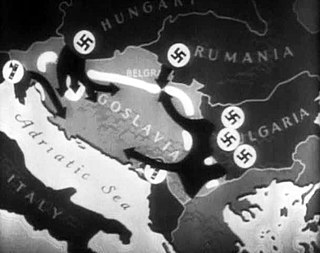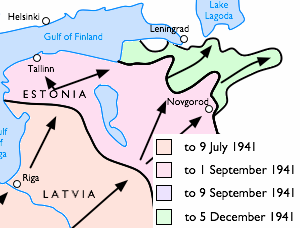The Fallschirm-Panzer-Division 1. Hermann Göring was a German Luftwaffe armoured division. The HG saw action in France, North Africa, Sicily, Italy and on the Eastern Front during World War II. The division began as a battalion-sized police unit in 1933. Over time it grew into a regiment, brigade, division, and finally was combined with the Parachute-Panzergrenadier Division 2 Hermann Göring on 1 May 1944 to form a Panzer corps under the name Reichsmarschall. It surrendered to the Soviet Army near Dresden on 8 May 1945.
The Panzerkorps Großdeutschland was a German panzer corps in the Wehrmacht which saw action on the Eastern Front in 1944/1945 during World War II.
XXXXVIII Panzer Corps, was a corps-level formation of the German Army which saw extensive action on both the Eastern and Western Fronts during World War II.
The order of battle for the Battle of France details the hierarchy of the major combatant forces in the Battle of France in May 1940.
A panzer corps was an armoured corps type in Nazi Germany's Wehrmacht during World War II. The name was introduced in 1941, when the motorised corps were renamed to panzer corps. Panzer corps were created throughout the war, and existed in the Army, the Waffen-SS and even the Luftwaffe. Those renamed from ordinary motorised corps retained their numbering.

The Army Group North Ukraine was a major formation of the German army in World War II.
A Flak Corps was a massed anti-aircraft (AA) artillery formation employed by the Luftwaffe for anti-aircraft, antitank, and fire support operations in World War II. A Flakkorps was a flexible organization that was made up of a varying number of AA regiments, brigades, or divisions. A total of six flak corps were organized by Germany during the war. The flak corps, while mainly intended to support ground units with concentrated anti-aircraft fire, in many cases provided also antitank support.

The Battle of Berlin was the final major campaign of the European Theatre of World War II, fought between Nazi Germany's Wehrmacht and the Soviet Union's Red Army. It began with the Battle of the Seelow Heights on 16 April 1945 and concluded with the Battle in Berlin.

The Axis order of battle for the invasion of Yugoslavia was made up of the various operational formations of the German Wehrmacht and Waffen-SS, Italian Armed Forces and Hungarian Armed Forces that participated in the invasion of Yugoslavia during World War II, commencing on 6 April 1941. It involved the German 2nd Army, with elements of the 12th Army and a panzer group combined with overwhelming Luftwaffe support. The eighteen German divisions included five panzer divisions, two motorised infantry divisions and two mountain divisions. The German force also included two well-equipped independent motorised regiments and was supported by over 800 aircraft. The Italian 2nd Army and 9th Army committed a total of 22 divisions, and the Royal Italian Air Force had over 650 aircraft available to support the invasion. The Hungarian 3rd Army also participated, with support from the Royal Hungarian Air Force.

Leningrad strategic defensive operation is the term in Soviet historiography for the defensive operations in the area south of Leningrad by the Red Army and the Soviet Navy during World War II from 10 July to 30 September 1941. The following operations are considered as part of the strategic operation:
This is the order of battle for the Leningrad Strategic Defensive covering the period 10 July to 30 September 1941.
German XXXV. Corps was a corps in the German Army during World War II.
German XXXIV. Corps was a corps in the German Army during World War II, that was formed twice.
German XXXIII. Corps was a corps in the German Army during World War II.
The LXX Army Corps, initially known as Higher Command z. b. V. LXX or Höh.Kdo.70, was an army corps of the German Wehrmacht during World War II. Throughout the war, it was deployed in occupied Norway.
The LIX Army Corps, initially known as the Higher Command for Special Deployment LIX was an army corps of the German Wehrmacht during World War II. The formation was active between 1940 and 1945.
The LXVIII Army Corps was an army corps of the German Wehrmacht during World War II. The corps was initially formed in April 1943.